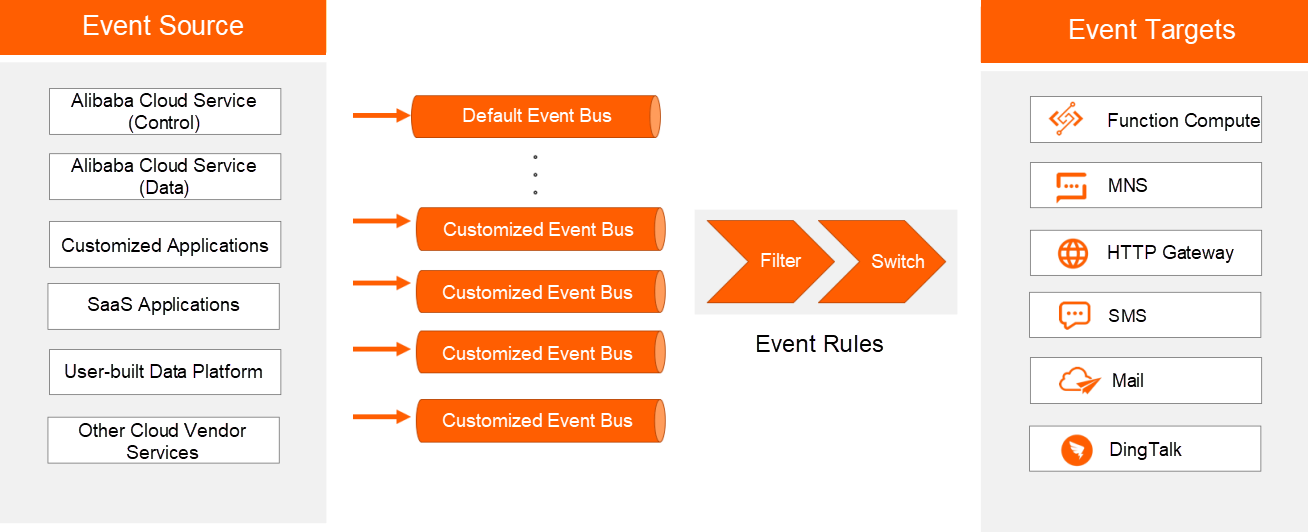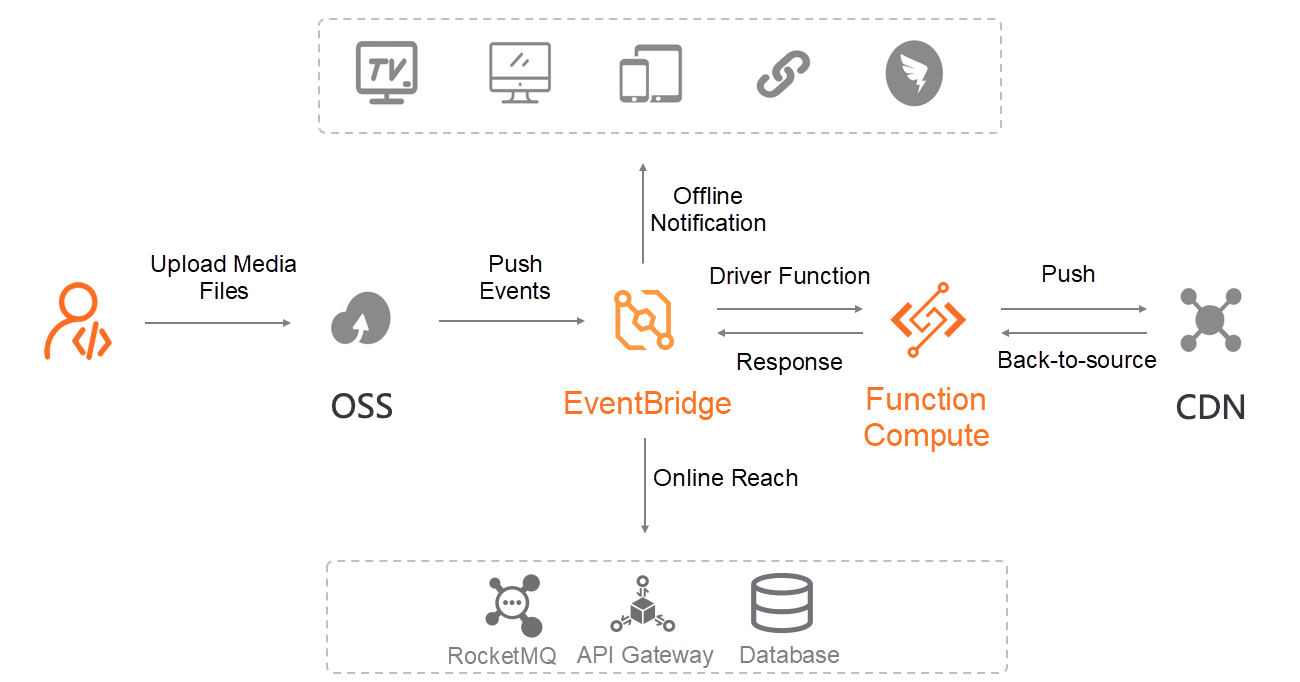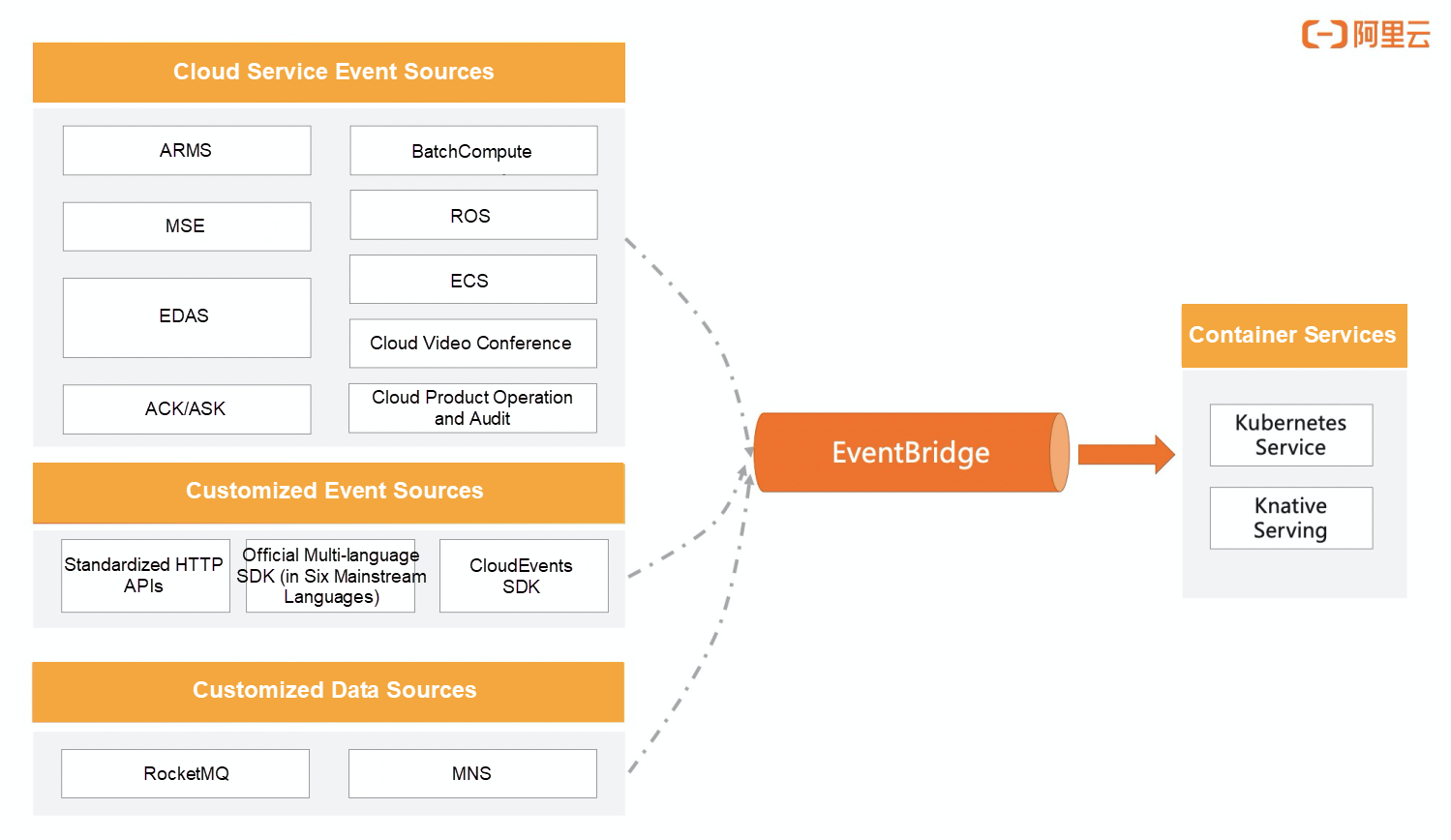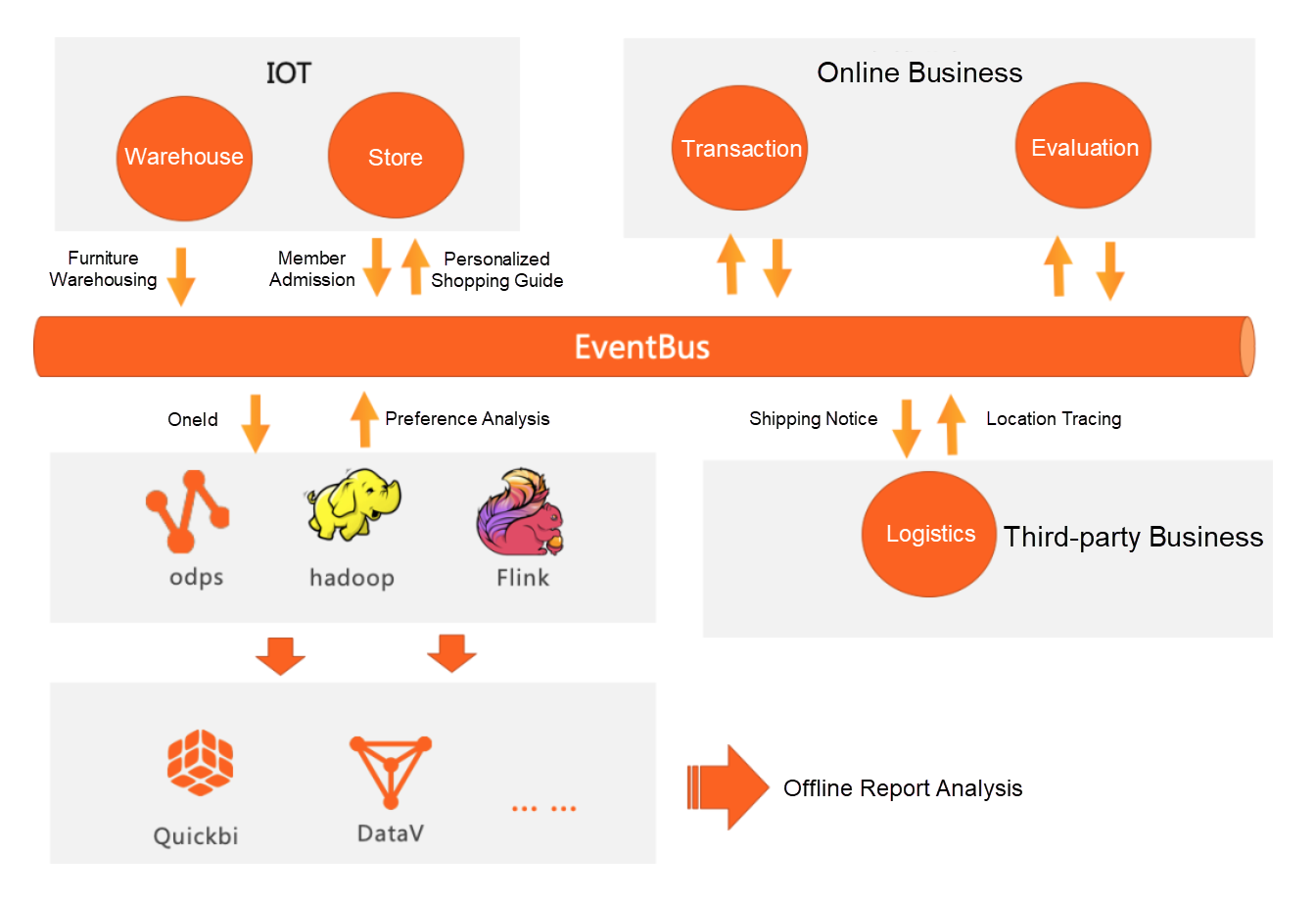By Chenyang
In recent years, cloud-native and Serverless have become buzzwords, and event-driven architectures have become a hot topic in the cloud application architecture field once again. According to a Gartner report, the event-driven model is listed as one of the ten major strategic technology trends, and event-driven architecture (EDA) will become the mainstream part of microservices in the future. The report also made the following predictions:
Despite the wonderful ideas, implementing the event-driven architecture is not simple in practice. Its main problems are explained below:
Alibaba Cloud launched the EventBridge Bus in November 2020 to solve these problems. EventBridge is a serverless event bus service that serves as a hub for cloud events. It connects cloud products and cloud applications with the CloudEvents 1.0 Protocol and provides centralized event management and driving capabilities. By doing so, it helps users build loosely coupled, distributed event-driven architectures easily.
In addition, there are a large number of vertical SaaS services in the cloud market outside Alibaba Cloud. EventBridge will integrate and be integrated across products, organizations, and clouds to help customers build a complete event-driven interface with efficient and controllable features on the cloud. Alibaba Cloud EventBridge provides the following core capabilities:
(1) Massive Alibaba Cloud Event Sources: EventBridge currently supports the official event access of more than 60 Alibaba cloud products. Users can get access to various resources, O&M, and audit events at no cost.
(2) Multiple Types of Custom Event Sources: EventBridge allows users to upload custom event content through the CloudEvent 1.0 standard protocol. It also supports the cleaning of data sources into custom events, such as messages and database changes.
(3) Rich Event Objectives and Processing Modes: EventBridge supports more than ten event targets, such as SMS, email, DingTalk, and API. More than ten event processing modes are supported, including full extraction, constants, and templates. Users can complete event-driven architecture and processing without any code.
(4) Sound Event Management and Reach Capability: EventBridge supports diagnostic capacities, such as event lifecycle query and tracing. It also allows users to reach complex events across networks, accounts, and regions.
The EventBridge products include several basic concepts, such as events, event buses, event sources, event rules, and event targets.

As shown in the preceding figure, events are generated and transmitted to the event buses through three types of event sources – official Alibaba Cloud, customized applications, and third-party SaaS. Users can configure event rules in the event buses to filter events and switch and ship the processed events to the user-specified event targets.
Based on the existing capabilities of EventBridge, three typical scenarios are listed below:
In the online education, gaming and live streaming industries, a large number of media data exists as online classrooms, and live broadcast rooms are produced, including audio and video file editing, slicing, and transcoding. Steep peaks and valleys during business processes exist in these industries. This type of business requires real-time event-driven coordination and Serverless execution capabilities to meet the high real-time, low-cost, and highly elastic business needs.

In this business scenario, EventBridge collects upload and change events from original files and drives downstream functions to perform highly concurrent and elastic media processing logic based on the business logic. After the function computing product is processed, it drives the results to downstream media channels while the processing results can reach offline notification channels, such as DingTalk, SMS, and mailboxes, as well as online channels, such as APIs and message queues through EventBridge. The solution enhanced elastic capacity, achieved lower O&M costs, and increased real-time performance after using EventBridge and computing functions.
As enterprises increase their business scales, business stability becomes increasingly important. It is particularly important to build a 360-degree and comprehensive monitoring system for applications to prevent frequent failures as the scenarios become more complex. After cloud-native reconstruction, traditional applications also bring more complexity to the application stability management while enjoying the dividends of cloud-native technologies. The most significant issue is that it is difficult to control changes. The business relies on the entire cloud infrastructure, physical resources, and cloud services at the IaaS layer, network resources, and even the dependent upstream and downstream services, which are changing constantly. Asa result, it is difficult for users to perceive the occurrence of the changes and corresponding impacts immediately, as 95% of the faults are caused by changes.
EventBridge solves this problem by creating a 360-degree business panorama, perceiving the changes and abnormal reactions clearly, and accessing whether these abnormal reactions are related to the recent changes in the entire product business process. If there are special problems, users can help products recover quickly through self-maintenance, thus minimizing the impact.

These capabilities are made possible by EventBridge's capabilities to integrate multiple cloud product events and trigger multiple cloud product responses through events. The event is an important carrier of information, coordinating various cloud services to work in an orderly manner through EventBridge.
How many scenarios can EventBridge reach in the future? Let's look at a scenario of a new retail smart furniture store:
All of the online business event data transferred through EventBridge will be transferred to the offline analysis system through EventBridge eventually. Business reports will be generated automatically for management to make performance appraisals or operation decision-making.

EventBridge plays a key role in this scenario. Whether it is in IoT, online business, or big data scenarios, EventBridge transfers event information efficiently to drive the achievement of business targets. The event serves as online business data and offline analysis data, reducing costs and improving efficiency.
Recently, EventBridge has witnessed comprehensive development and enhancement in its ecosystem integration scale, event reach capability, and event application integration.
As the official event hub product of Alibaba Cloud, the core capability of EventBridge focuses on connection and integration. EventBridge will expand the scale of scenarios from Alibaba Cloud network environments in future connection scenarios. Business applications will be deployed in on-premises IDCs, cross-cloud vendors, and edge environments of public networks that all Alibaba Cloud EventBridge applications can connect with each other.
In integration scenarios, EventBridge will continue to expand the scale of event sources and targets, covering more cloud products, customized data sources, and third-party SaaS. In addition, EventBridge will build event application templates based on various application scenarios to reduce the complexity of user event integration development, allowing users to integrate them at a low cost with a simple configuration.
Time Series Database – Solution to the Problem of Timeline Expansion (High Cardinality)

208 posts | 12 followers
FollowAlibaba Clouder - September 6, 2019
Alibaba Clouder - June 23, 2020
Alibaba Clouder - April 16, 2019
XianYu Tech - June 22, 2020
Alibaba Cloud Native - June 12, 2024
Alibaba Cloud Community - March 9, 2022

208 posts | 12 followers
Follow Function Compute
Function Compute
Alibaba Cloud Function Compute is a fully-managed event-driven compute service. It allows you to focus on writing and uploading code without the need to manage infrastructure such as servers.
Learn More Retail Solution
Retail Solution
Alibaba Cloud enables digital retail transformation to fuel growth and realize an omnichannel customer experience throughout the consumer journey.
Learn More Serverless Workflow
Serverless Workflow
Visualization, O&M-free orchestration, and Coordination of Stateful Application Scenarios
Learn More Big Data Consulting Services for Retail Solution
Big Data Consulting Services for Retail Solution
Alibaba Cloud experts provide retailers with a lightweight and customized big data consulting service to help you assess your big data maturity and plan your big data journey.
Learn MoreMore Posts by Alibaba Cloud Native